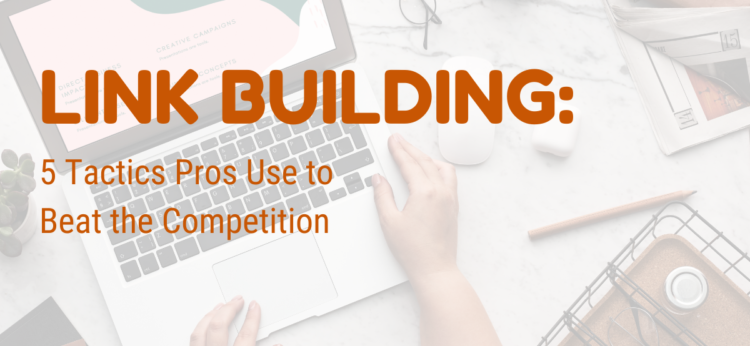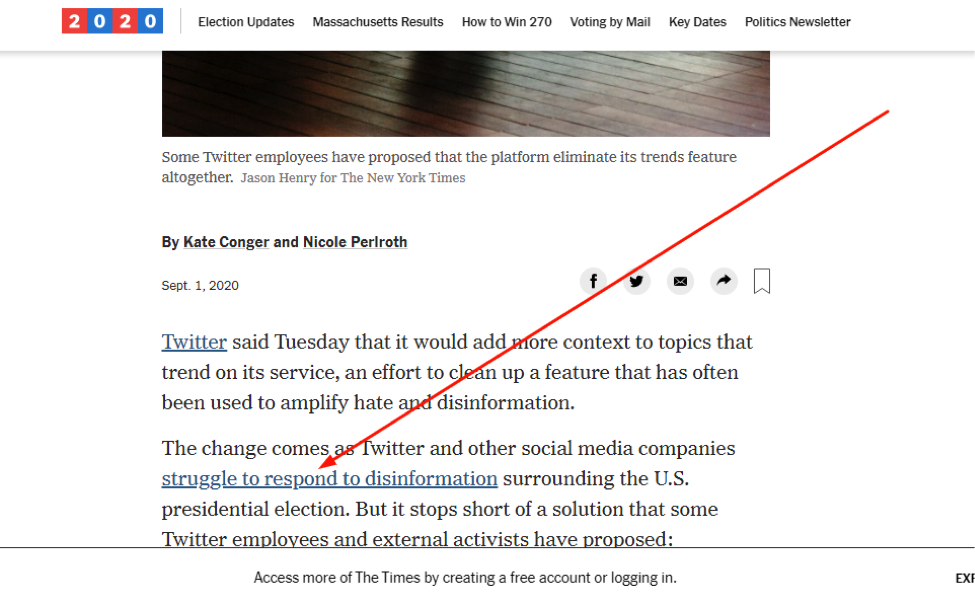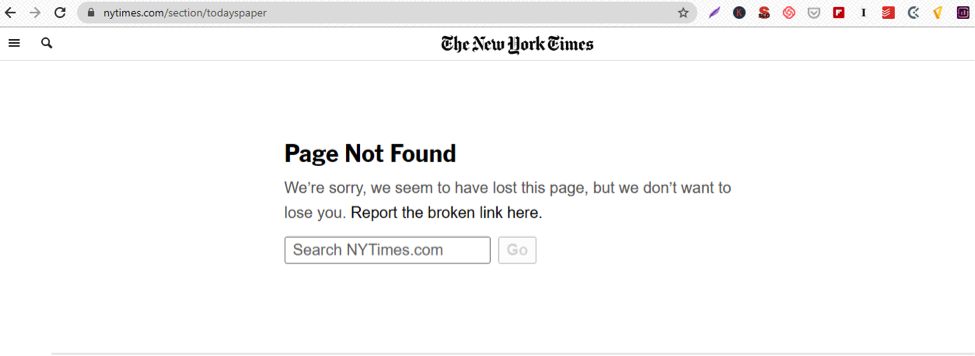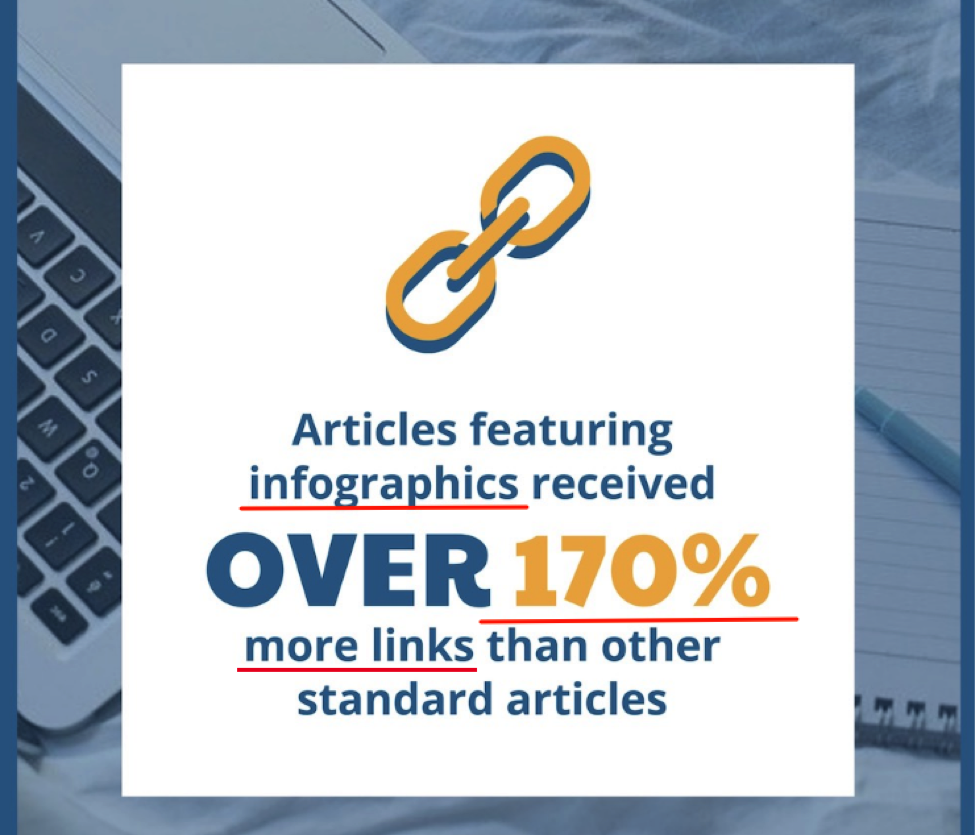The following is a guest post by Liakat Hossain. Liakat Hossain is a content marketing professional at WebAlive, a Melbourne based SEO agency. He has been helping businesses grow by developing content marketing strategies since 2011. When not busy, he likes to research on current online marketing strategies.
If you ask any person with decent knowledge about link building, this would be the typical response: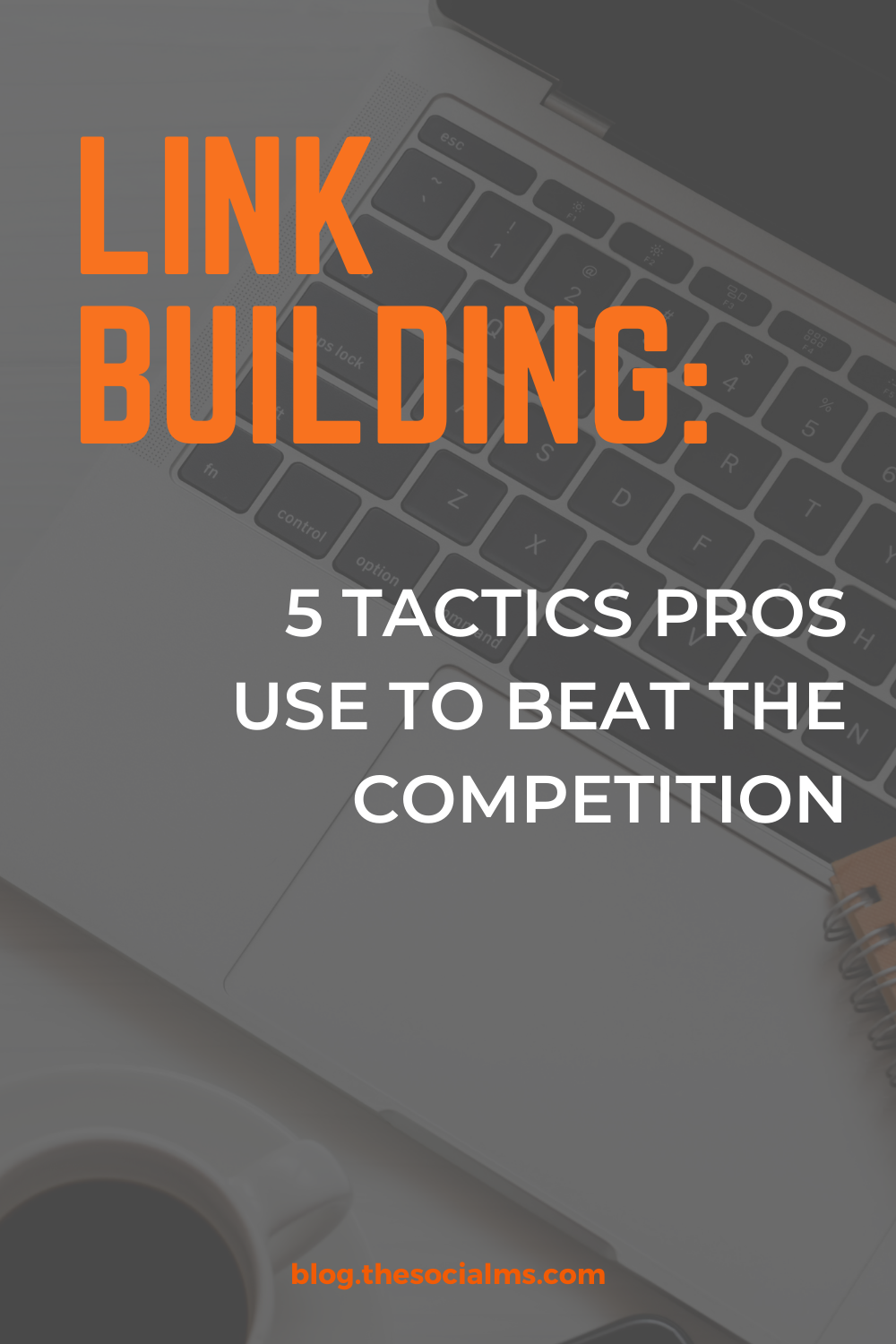
“You have to create quality content. The more link-worthy your content are, the more inbound links you would receive. Apart from that, enhance your social presence. While doing so, don’t forget about directories” and blah blah blah.
The fact is you have most likely exhausted all these tactics. You probably know these better than the person you asked.
Before you read on - we have various resources that show you exactly how to use social networks to gain massive traffic and leads. For instance, check out the following:
FREE Step-by-Step Twitter Marketing GuideFREE Pinterest Marketing Ebook
What you are now looking for are advanced link building tactics. The one’s SEO and online marketing professionals use to stay miles ahead of the competition.
Well, five such tactics will be the focus of our discussion today. Do stick on. You need these for that sweet rank boost you have long been craving!
(The search volume growth of link building from Google is shown below. For inspiration purpose)
Before we dive into the discussion, I would like to break the news.
An official press release from Google declared PageRank a ranking factor. And one of the components of PageRank is the number of inbound links.
Let’s begin:
1. Find broken links and acquire them
Broken links are those links that point to resources that are no longer there.
Suppose you click on a hyperlinked text on a page.
Hey, before you read on - we have in various FREE in-depth guides on similar topics that you can download. For this post, check out:
FREE workbook: CREATE AWESOME BLOG POSTSFREE Beginner's Guide: START A BLOG
And it shows you the following.
That means this link is broken.
And you can use it to get an inbound link to your site’s pages.
But how can I find relevant broken links?
Well, there are several tools for this purpose. You can use the Check My Links Chrome extension (it’s free). It shows broken links on any page you are visiting.
You can also use Screaming Frog SEO Spider. It comes with both a free and paid version. However, the free version can crawl no more than 500 URLs.
Last but not least, Ahrefs is also a fantastic (and well-rounded) option. It’s a paid tool that I have received tremendous value from.
That’s nice. But how can a beginner like me build links using this method?
Well, that is what I was about to discuss.
As the old saying goes, “a car is only as good as the driver.”
Likewise, the more you practice this method, the more use you would get out of the tools above.
Here are the steps you can follow:
- Put together a list of URLs of pages or websites you want links from.
- Using the tools mentioned above, find broken links on these pages.
- Categorize these links in terms of value. For me, the more backlinks the broken link has acquired, the more valuable it is. The search volume of the relevant keyword for that link can dictate value as well. Ahrefs is an excellent choice for this step.
- Analyze the page containing the broken link. Especially the text around the anchor text leading to the broken link. Also, use WayBackMachine to find out what content the link pointed to previously.
- Find out if you have similar content on your site. If yes, then share this with the owner/editor of the page containing the broken link. If not, then create one that is a good fit for that page and relevant keyword. Once prepped, let the editor know of your content.
That’s nice! Can you provide links to some tutorials that elaborate this link building method?
Yes, of course!
Here are the resources that have helped thousands of SEO analysts:
- Broken Link Building guide from Backlinko (Article)
- Broken Link Building guide from Ahrefs (Article)
- Broken Link Building strategy from The Social MS (Article)
- Broken Link Building in action (Video tutorial)
2. Create data-rich, relevant and consumable infographics
Infographics are very effective for presenting a ton of information visually. A study by Venngage and HubSpot found the following.
170%!
Meaning people would be linking to your content in crowds! This is clear evidence that infographics are highly useful for growing quality link profile.
By the way, did you observe something?
I have chosen to present this information using a visual. Thus, you would remember it longer.
I have a basic idea about infographics. But what are the criteria of a good one? One that can get me links from high-authority sources?
A valid question!
Well, such infographics should always have the following three criteria (at least).
Those are:
- Data-rich
The more data there is in an infographic, the more usable it is. High usability, in turn, would encourage others to link to your infographic. - Relevant to your desired audience
Your target audience should find the infographic very relevant.
Your infographic needs to provide data that your audience can use to address their pain points. - Easily consumable
Loading your infographic with tons of data isn’t enough. The presentation needs to user-friendly as well. The easier it is, the more people would want to link to your infographic.
Understood. But what tools should I use to create such infographics?
There are several that comes to mind.
Here are some of the following:
Among these, Canva is a free tool.
Venngage and Adobe Spark offer both free and paid plans.
The rest offer only paid plans.
Links to some infographic building best practices would be nice!
Yes, I had a feeling you were going to ask this!
Well, here are some you would find useful:
- Tips for building infographics (Article)
- List of infographic creating tools. (Article)
- Experience-based guide to building an infographic (Article)
- Guide to infographic design (Article)
- What makes a compelling infographic? (Video)
- Infographic do’s and don’ts (Video)
3. Publish SEO optimized and hyper-valuable guest posts in blogs of your niche
Guest posting is something you are already familiar with.
However, most content marketers cut back on their efforts when prepping guest posts.
They prefer investing more effort in creating on-site content. While it’s understandable, it’s not usually a good idea.
There is no saying how far a well-formatted and unique post can take you.
Success story:
Gregory Ciotti acquired over 36K email subscribers with the guest blogging strategy.
Suppose you have published content in a blog of decent authority. Now, this blog has a large number of competitors.
When they spy on the blog you published in; they would likely come across your piece. If it’s excellent, they would like to collaborate with you.
Thus, I strongly recommend you don’t cut corners when guest posting. Make them SEO optimized. Make them valuable. Make them fun.
That makes sense! Can you give some tips from your own experience regarding guest posting?
With pleasure!
Here are some that I have learned over the years:
- Inject emotion in the titles of your guest posts.
You can do so by using power words appropriately. Additionally, you might want to use CoSchedule to analyze your titles. I have learned to make mine drastically engaging via this tool. - Use custom images.
The easiest and most straightforward option is to go for stock images.
However, custom ones relevant to the surrounding text and topic can deliver more. Canva is an excellent tool for creating custom pictures. - Ask the site owners/editors for buyer personas they use for their blog.
Buyer personas are sample profiles of the target audience. It helps a content marketer/blogger create focused content. If you have a clear idea about the people who would ultimately read your guest post, you would be able to make your articles more useful and relevant. - Reply to all the comments your guest posts receive.
This might feel like a chore. But it offers significant value when sincerely done.
Each comment offers you the opportunity to put your website in front of an engaged audience.
Furthermore, it helps strengthen the relationship with the editor (which may go a long way). Besides, it’s a means of sharing valuable information that can lead to inbound links. - Share bits of useful and relevant data you have gathered with the editors.
Since you have been building links for your (or your clients’) blogs, you are likely to have visitor data.
From this heap, share a piece or two with owners of relevant blogs.
Request them to send a link your way in case they find it useful.
A little extra mile can bring in unexpected opportunities sometimes!
Sounds pretty valuable! Thanks! Now links to tutorials, please!
Coming right up!
Here are some that I still visit from time to time:
- Guest blogging as an inbound marketing strategy (Article)
- Guest blogging examples. (Article)
- Guide to guest posting (Article)
- Guest posting tips from experts (Article)
- Guest blogging guide (Article)
4. Perform your own research and produce long-form and data-based content
So you have been publishing content regularly. For months. Great work!
However, boosting your link profile would require some extra work. You need to research on your own on audience-relevant topics.
And every four months (or six), publish content based on data from the research. If necessary, partner with high-authority bloggers or brands in your niche.
Brian Dean, the founder of Backlinko, has produced many articles this way. Some of those have acquired thousands of inbound links and still do every day.
Here is one of those.
Have a look at the number of shares on the left-hand side.
An article with that many shares is guaranteed to have at least five times more links!
See? I also linked to his article! I had to! It’s that valuable!
Sounds exciting! Can you share a step-by-step guide to produce such content?
I would try to. It may not work for everyone. You may need to tweak it a bit to meet your needs.
Here they are:
- Run a survey on your target audience.
The purpose is to find out more about their pain points.
If needed, run a paid video ad promoting your survey.
You will get back the value worth your weight in gold. - Try to figure out their key pain points.
- Do some fact-checking. Find out which of those pain points you can research on with limited time and resources.
- Reach out to influencers, brands or bloggers in your niche. Find out if they would be interested in being partners in your research (optional).
- Determine your research methodology.
It includes the research question, necessary tools, data collection method, approximate cost, responsibility delegation time limit of each phase, participants, data analysis method, and how the findings would be used.
If all these steps overwhelm you, then relax. Take your time. Do your studies. Talk to experts in your niche. Then have a go at it again.
It gets easier with time.
5. Start your own webinar
One of the surefire ways of acquiring massive inbound links is to become a seasoned pro in your niche.
And one of the ways of doing so is to start a webinar.
It is a great medium to talk about audience-relevant issues and create awareness.
Did you know?
One webinar has the potential to get you over 1,000-leads spike!
A properly planned and hosted webinar can lead to sales and subscriptions boost consistently.
Furthermore, each episode would generate ideas for more content.
Makes sense. But webinars are a little intimidating.
I know exactly what you mean.
Webinars can be pretty scary for first-timers.
And that’s why I am going to provide links to some detailed tutorials.
I had a feeling you were going to ask for those!
Here they are:
- A beginners’ guide to webinars (Article)
- A step-by-step guide to webinars (Article)
- Hosting and scheduling a webinar (Article)
- Doing a webinar with ease (Article)
- Useful webinar for your audience (Article)
- Webinar hosting guide (Video tutorial)
- Guide to webinars (Video tutorial)
There is something I must tell you.
Appearing on webinars of fellow bloggers and brands would also get you a massive number of links to your website.
So, feel free to reach out to them.
Let them know about webinar topics their audience would be benefitted by.
It’s OK (and wise) to be shameless when it comes to self-promotion.
After all, you would be providing significant value to the audience!
A quick recap
Let’s go over the link-building tactics we have covered.

Clicking on any would take you to the corresponding body up in the discussion.
- The broken link building method
- Creating infographics
- Guest blogging
- Publishing research-based content
- Starting your own webinar
This is just the beginning.
If you stayed till the end, then congratulations!
The tactics discussed would help you get on your way to being a pro in link building.
However, keep one thing in mind.
Your quest for getting inbound links must never cease.
Because the moment it does, your competition would get ahead of you.
You don’t want that, do you?
Are you struggling with your SEO? Do you think you have done so much but somehow your blog traffic from Google search is stagnating? Do you need some help with setting up your blog for SEO? Are you not sure how to build links to your blog?
We have got you covered!
We created a free email course about SEO for your blog – or SEO with a blog. Join today for 4 days and 4 emails and learn about on-page SEO, Google Ranking factors, link building tactics and how to find keywords even you can rank for. Join our (free) email course about Blog SEO today!

